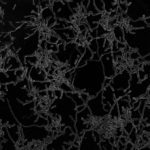Link to Pubmed [PMID] – 36893271
Link to DOI – 10.1073/pnas.2218163120
Proc Natl Acad Sci U S A 2023 Mar; 120(11): e2218163120
Aneuploidy is a frequent occurrence in fungal species where it can alter gene expression and promote adaptation to a variety of environmental cues. Multiple forms of aneuploidy have been observed in the opportunistic fungal pathogen Candida albicans, which is a common component of the human gut mycobiome but can escape this niche and cause life-threatening systemic disease. Using a barcode sequencing (Bar-seq) approach, we evaluated a set of diploid C. albicans strains and found that a strain carrying a third copy of chromosome (Chr) 7 was associated with increased fitness during both gastrointestinal (GI) colonization and systemic infection. Our analysis revealed that the presence of a Chr 7 trisomy resulted in decreased filamentation, both in vitro and during GI colonization, relative to isogenic euploid controls. A target gene approach demonstrated that NRG1, encoding a negative regulator of filamentation located on Chr 7, contributes to increased fitness of the aneuploid strain due to inhibition of filamentation in a gene dosage-dependent fashion. Together, these experiments establish how aneuploidy enables the reversible adaptation of C. albicans to its host via gene dosage-dependent regulation of morphology.

